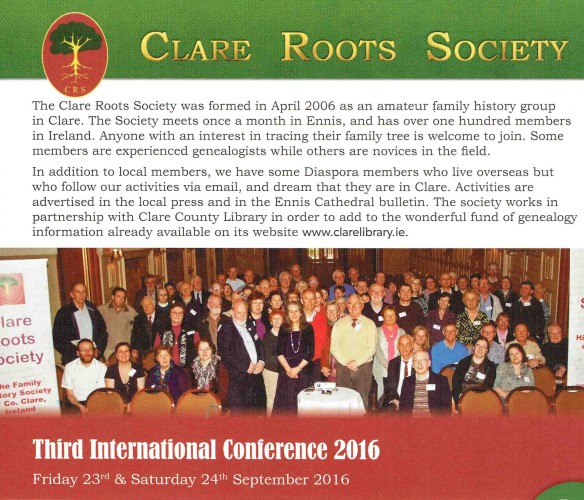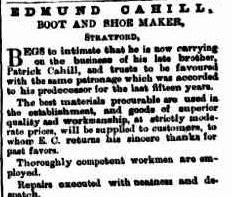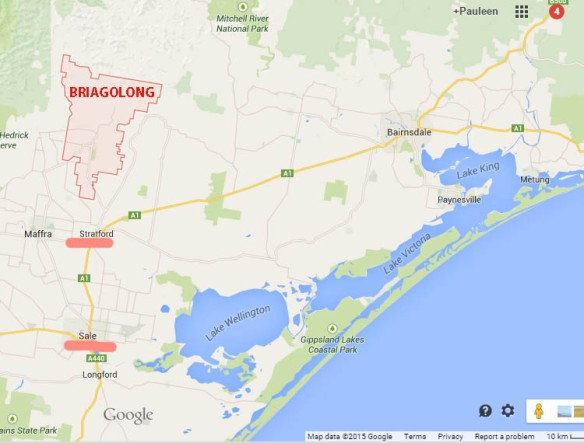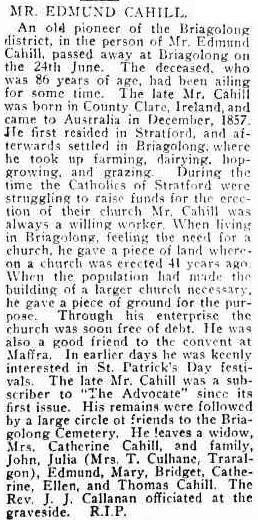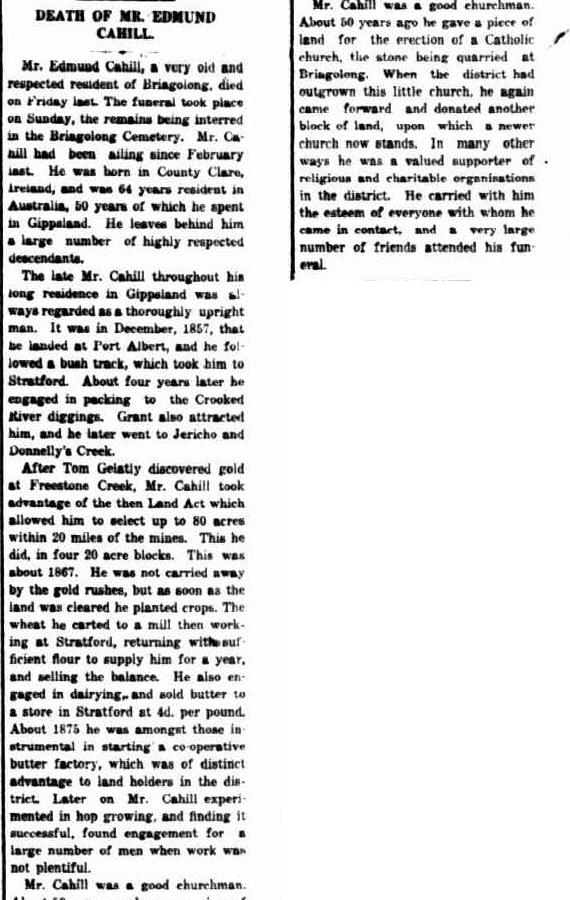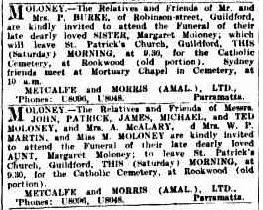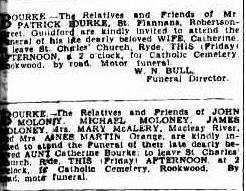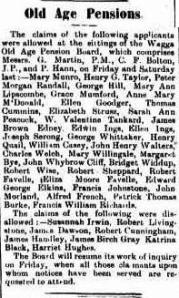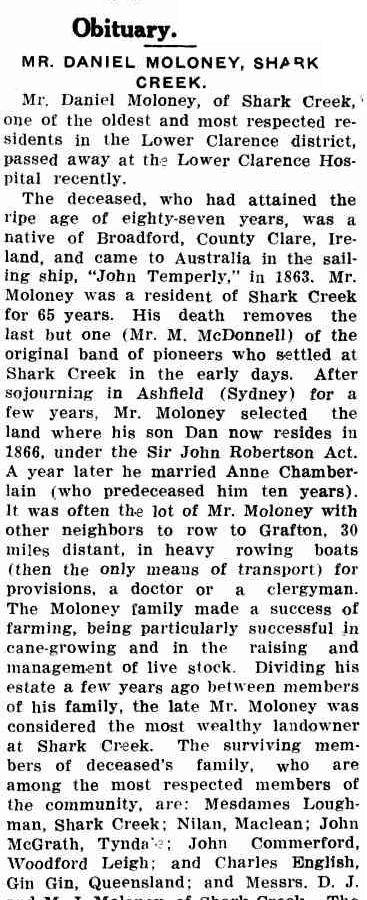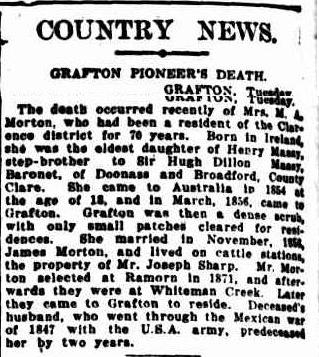The discovery of Bridget Reeves’ gravestone and the notice of her mother’s (Julia Cahill) death notice, pulled the unravelling thread to a genealogical discovery. You can read this story here.
I decided to explore when Bridget’s family arrived in Victoria. Her brother Edmund’s obituary revealed he’d lived in the Gippsland area for some years and had an estimated year of arrival in the late 1850s.
Turning to the PROV immigration indexes online I searched both assisted and unassisted immigrants. My thought was that given his mother’s age, she may have been unassisted. However I could find no Julia Cahill anywhere near her age in either set of indexes, and NSW provided similar results. I knew it wasn’t unusual for emigrants to fudge their ages so they could gain access to the government’s passage assistance. In this the east Clare emigrants of this time frame were often given a helping hand by the parish priest of Broadford, Fr John Bourke.
Temporarily giving up on Julia, my search focused on Edmund Cahill and there were two possibilities: one, Edmand (sic), aged 20 on the Mindoro in October 1857 and another, Edmond aged 17 on the Lady Milton in July 1857. I eliminated the second because of the cluster of people he was travelling with, and his place of birth (Tipperary).
Next step was to search for all Cahills on the Mindoro as that fitted this Edmund’s age best. Bingo! There was Edmund (20), Catherine (17) and Pat (22). But were they the right family? Catherine proved not to be part of this group because she came from Kilkenny not Clare.
I used Ancestry to search for the digitised documents[i] given it was late at night and a trip to the library wasn’t possible. Edmand Cahill, 20, a shoemaker from Clare was listed among the single men as was Pat Cahil (sic), 22 also a shoemaker from Clare and both could read and write. They had signed out of the ship on their own account on 19 November…later than others so I wonder why the delay.
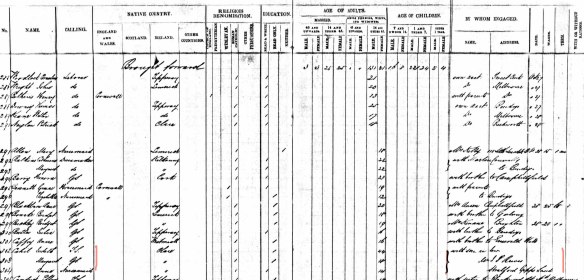
Original data: Victoria. Inward Overseas Passenger Lists (British Ports). Microfiche VPRS 7666, copy of VRPS 947. Public Record Office Victoria, North Melbourne, Victoria. CLICK on the image to see it enlarged.
Bearing in mind the different spelling of Pat’s surname I again searched the indexes for Cahil. Another Eureka moment as it turned up additional passengers: Judith (44), Margaret (18) and Anne (14). Against their names on the Certificate of Final Departure[ii] was an “R” indicating their fare had been paid by family or friends as remittances. Had Julia originally been Judith? That was my question. The Immigration documents clarified it once and for all: they were going to Mr J S Reeves, son-in-law, Stratford, Gippsland. Mystery solved. I wasn’t concerned about Julia’s 23 year drop in age given what I knew from other experiences…but she must have worn well to get away with it!
Now we had clear links between Bridget Reeves, her brothers Edmund and Pat, sisters Margaret and Anne and mother Julia…and while there are many mentions they came from Clare, it was only Bridget’s legal separation that referred to her specific place of origin in Kilbane.
I think Julia/Judith was so brave to make the move from Ireland to Australia when she was 67. As she’s listed as a single woman on the ship’s documents it implies her husband, John Cahill, had died before the family emigrated. Unfortunately I can find no reference to them in the Griffiths’ Valuations in Killokennedy from 1852 though there is a Johanna Cahill in Kilbane village…surely it’s too much to think she had three first-name incarnations. As I mentioned previously, I found only indirect potential mentions in the parish registers which indicate a potential link to the Vaughan family.
Julia was able to spend 28 years with her family in Gippsland before her death, which was well recognised in the newspapers. In death as in life, she is surrounded by her family and remembered on the gravestone in the Sale cemetery.
Rest in Peace, Julia Cahill, another foundation member of our Colonial women who helped build our country.
As an aside, the man who was lost overboard on the Mindoro was William Bland and his death is recorded on the ship’s registers as 1 October not 1 August. His wife, Elizabeth Bland, only 23, from Middlesex, was left with two small children when she went to friends at Prahran.
————
[i] Ancestry.com. Victoria, Australia, Assisted and Unassisted Passenger Lists, 1839–1923 [database on-line]. Provo, UT, USA: Ancestry.com Operations Inc., 2009.
Original data: Victoria. Inward Overseas Passenger Lists (British Ports). Microfiche VPRS 7666, copy of VRPS 947. Public Record Office Victoria, North Melbourne, Victoria.Victoria. Inward Overseas Passenger Lists (Foreign Ports). Microfiche VPRS 7667, copy of VRPS 947.
[ii] Ancestry.com. Victoria, Australia, Assisted and Unassisted Passenger Lists, 1839–1923 [database on-line]. Provo, UT, USA: Ancestry.com Operations Inc., 2009.
Original data: Victoria. Inward Overseas Passenger Lists (British Ports). Microfiche VPRS 7666, copy of VRPS 947. Public Record Office Victoria, North Melbourne, Victoria.Victoria. Inward Overseas Passenger Lists (Foreign Ports). Microfiche VPRS 7667, copy of VRPS 947.


